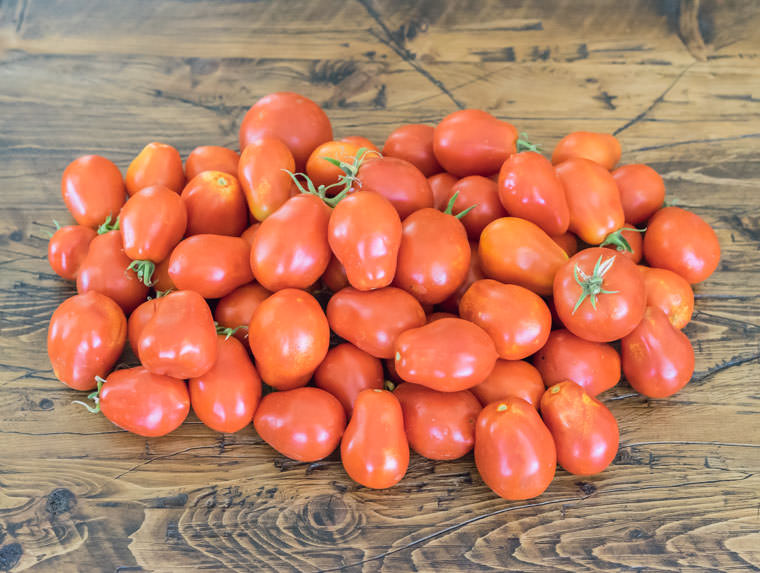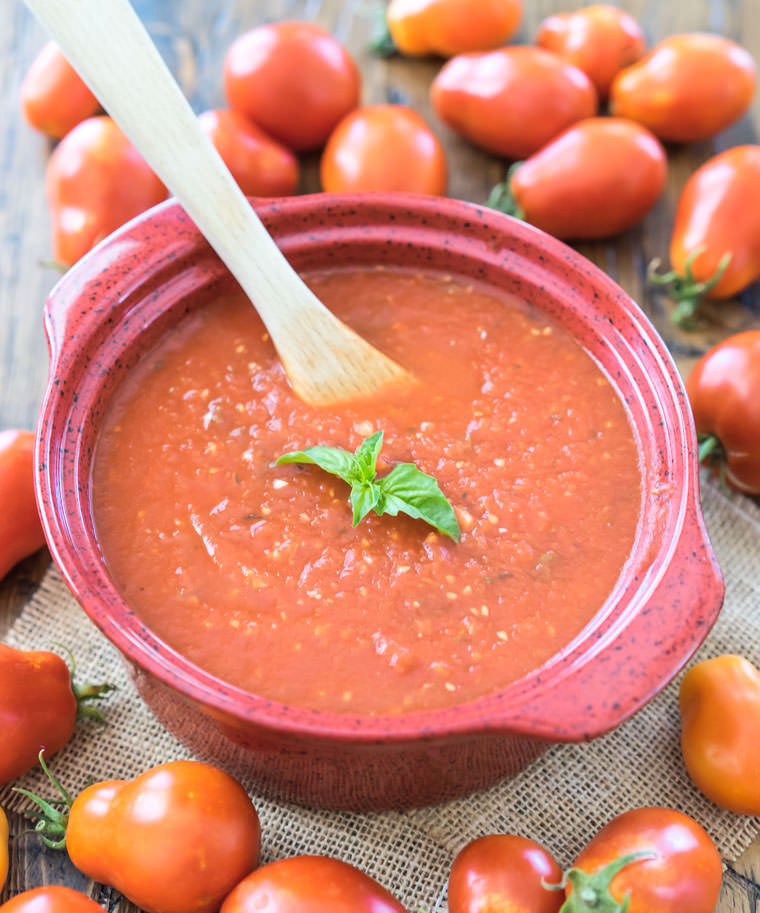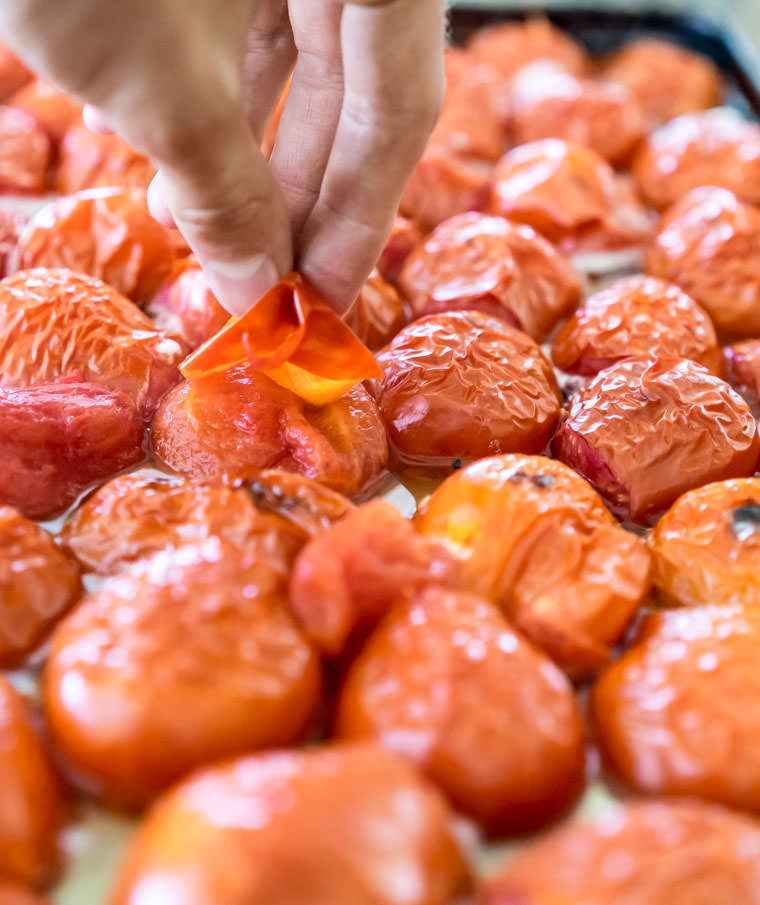Can you cut 1 Tonne of carbon pollution out of your life?
Take the challengeThis is a recipe from Andrew Olson, founder of One Ingredient Chef.
So I went over to check on my community garden yesterday and found that my Roma tomatoes plants had gone crazy over the last week! I ended up coming home with this…

The only thing I could think to do with so many tomatoes was make homemade marinara sauce from scratch and freeze it. I ended up putting together a simple, classic recipe (below) and it was the freshest, tastiest marinara I've ever had. With fresh locally-grown tomatoes plentiful at farmers' markets anywhere in the northern hemisphere this time of year, this is the perfect time to make a huge batch and freeze it for pasta sauces and homemade pizzas throughout the year. You'll be glad you did.

Ingredients:
- 8-9 cups Roma or San Marzano tomatoes
- 2 tablespoons olive oil
- 6 cloves garlic
- 1 teaspoon salt
- 1.5 teaspoons dried oregano
- 3 tablespoons fresh basil
- 1 chili pepper (optional)
NOTE: if you just want to make one jar of sauce, the recipe can easily be cut in half.
Step One
To start, the tomatoes need to be peeled. This seems like a dreadful job, but it isn't that bad with this broiling technique… Grab about 8+ cups, by volume, worth of tomatoes (take your best guess, the exact amounts aren't super important here, as the flavors can be adjusted later on). Rinse them, cut out the stem and then slice in half. Place face-down in a pan or baking sheet with edges (to catch the water released from the tomatoes when heated) and then move them to your oven's broiler until the skins are wrinkly but just before they start to char. Let them cool slightly, then simply pinch off the skin from each tomato. It's that easy.Note: to prevent your sauce from becoming too watery, make sure to drain out all the water that was released during broiling, and also give them a gentle smash with a spatula (careful, they're hot) to wring out any excess water before adding the tomatoes to the sauce.

Step Two
While the tomatoes are broiling, begin warming your largest skillet over medium-high heat with a drizzle of olive oil and throw in about 6 garlic cloves, loosely-chopped. Then, when the tomatoes have been peeled and drained, throw them into the pan along with a teaspoon of salt, a few tablespoons of minced basil leaves, 1+ teaspoon of dried oregano (and/or any other Italian spices that seem exciting to you, like thyme). You can optionally include a diced chili or tablespoon of red pepper flakes to add some heat. Let these simmer and break down over medium-low heat for a full hour, checking/stirring once or twice.

Step Three
After an hour, the sauce will have broken down quite a bit, but it will still be too chunky, so transfer the sauce to a blender and pulse a few times for "chunky" sauce, and a few more times for totally smooth sauce. (Alternatively, you can use an immersion blender, if you have one, to puree the sauce right in the pan.) Then return the sauce to the pan and continue to simmer for at least another hour – time is essential for the acidic taste in the tomatoes to dissipate and the flavors to meld together. At this point, give the sauce a taste and feel free to adjust the salt or herbs to your liking. If the sauce has the right consistency, it's done. Still a little too thin? Give it another 30 minutes of simmering to reduce/thicken even further.
The sauce can be used immediately or stored in refrigerated mason jars for a week. You can also freeze the sauce in zip-top bags (once cooled), muffin tins, or tupperware containers and simply thaw in a saucepan as needed.
